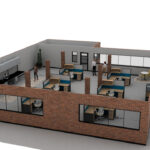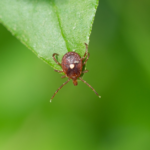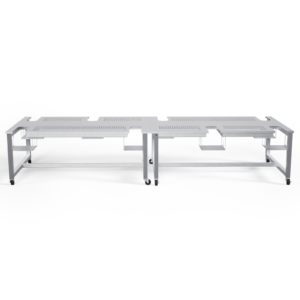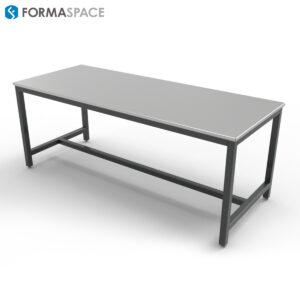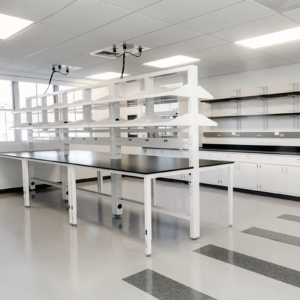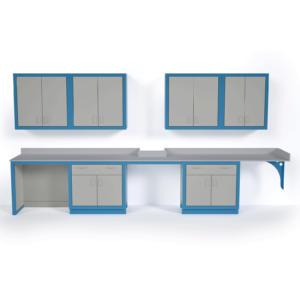Ebola virus, Marburg virus, Dengue Fever, Lassa Fever, SARS and now the Middle East Respiratory Syndrome Coronavirus. These are the dangerous disease pathogens that are the stuff of nightmares. Yet for scientific researchers, safe access to these agents is crucial for conducting experiments to identify, understand and ultimately cure diseases caused by these highly infectious diseases.
Biosafety Level 4 Labs Provide Access and Protection for Science Personnel
Laboratory experts that build and manage Biosafety Level 4 (BSL4) laboratories have to exercise great care to protect scientific researchers from accidental infection, to avoid cross-contaminating scientific specimens and to protect the health and well-being of the community surrounding these research laboratories. These dangerous agents can cause infection through primary pathways:
- Autoinoculation, e.g. accidentally sticking yourself with a needle
- Respiratory exposure to infectious aerosols
- Mucous membrane exposure to infectious droplets
As complicated and risky as the task of preventing disease transmission sounds, there are actually very straightforward engineering principles which experts who manage BSL4 laboratories employ to keep things safe. The underlying safety goal is to maintain a constant physical and operational barrier between the research scientists and the infectious agents at all times.
How BSL4 Labs Manage Safety
Let’s take a look at the Galveston National Laboratory (GNL), which is a Formaspace lab furniture customer. First opening in 2008, the GNL is housed within an eight story, 80,000 sq. ft. research facility on the east end of Galveston, a barrier island just off the Texas Gulf Coast. This primary structure is built to resist a category 5 hurricane; in fact, during its first year of operation, the GNL was tested by the high flooding and winds from a direct hit by Hurricane Ike. To maintain a secure physical and operational barrier, the laboratory architects decided to construct the 12,000 ft.² BSL4 laboratory as a “building within a building.” Located on the upper floors at a height at least 30 feet above the floodplain (to prevent flood risk), the BSL4 laboratory has completely isolated mechanical systems, including as its own dedicated electrical, plumbing and HVAC systems. In fact, proper layout of the HVAC systems throughout BSL4 laboratories is critical. Negative air pressure is used to establish the correct directional airflow. This ensures that pathogens in aerosol form get picked up by powerful HEPA filters and do not cross into the wrong areas by mistake. Within a BSL4 laboratory, there are two different approaches to providing investigators with safe access to potentially dangerous pathogens.

Cabinet Laboratory Approach: Class III Biological Safety Cabinets
The first is called the “cabinet laboratory” approach. In this case, research investigators handle agent pathogens through the use of a Class III Biological Safety Cabinet. These cabinets, with their ventilated hoods and built-in sleeved gloves, provides the necessary physical and operational barrier between the research scientist and the infectious agent specimens.
Suit Laboratory Approach: Pressurized Suits
The second approach is the “Suit Laboratory” in which personnel wears a full body pressurized suit. This approach allows greater freedom of movement — aside from the tethering necessary to provide airflow to the suit. The freedom to move around is necessary, for example, to work with research test animals housed within the BSL4 laboratory. Implementation of a suit laboratory, in turn, requires the construction of a sophisticated series of entry rooms to provide the necessary constant physical and operational barrier between investigators and the infectious agents. Typically, personnel pass through a sequence of rooms, starting with an access corridor leading to an outer change room and then to a shower and then to an inner change room. In this inner change room, the investigator puts on his or her individually assigned positive pressure suit. After verifying correct air pressures, the investigator then steps into the next room in the sequence — the decontamination shower — which also serves as an airlock to keep the sealed airtight barrier in place at all times. From here the investigator can put on boots to help protect the pressurized suit and commence work in the ‘suit area’. Here investigators will perform their tissue culture and agent manipulation, undertake necropsy studies, manage sample storage, provide care for research animals, run samples through large centrifuges, etc.
Safety Considerations Extend Down to the Selection of Lab Workbench Furniture
As you might expect the suit area is constructed to provide a completely airtight environment. All surfaces (including the laboratory furniture) need to resistant to chemicals used for decontamination as well as configured to contain any accidental spills. The technical laboratory furniture needs to be of an open construction style to avoid concealed surfaces which are difficult to inspect and clean. Industrial lab workbenches need to have bench tops with seamless surfaces that are impervious to chemicals, including organic solvents. Upon completion of the work, the investigator reenters the decontamination shower area and washes off the suit thoroughly then proceeds through the sequence of rooms in the reverse order to exit the lab. In conclusion, we hope the short summary above gives you some insight into the ways that laboratory architects are able to ensure a constant physical and operational barrier between biological agents and investigators in order to maintain safe operation of Biosafety Level 4 laboratories.

Building or Updating Your Lab? Contact Formaspace for Your Laboratory Furniture Needs
Here at Formaspace, we have extensive experience customizing and manufacturing custom laboratory furniture, including wet labs, lab benches, and industrial workbenches. If you want to speak with one of our technical furniture experts, feel free to contact us and we’ll be happy to share our expertise.




